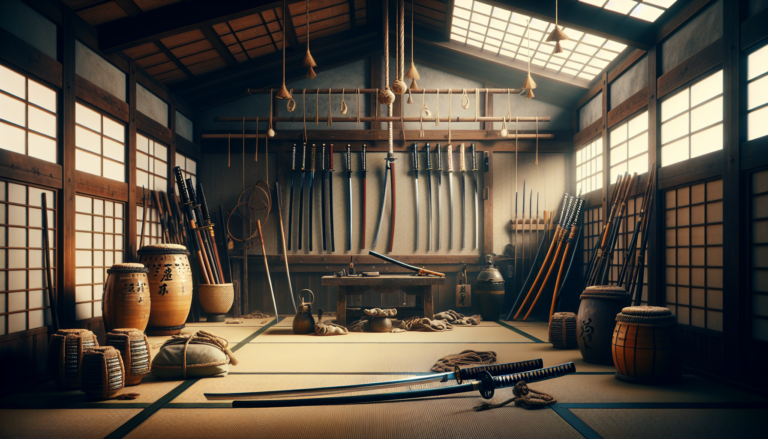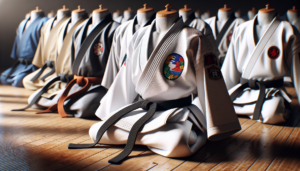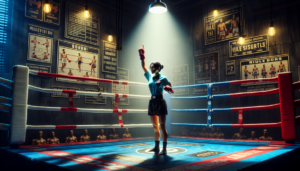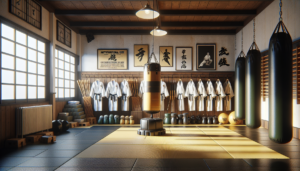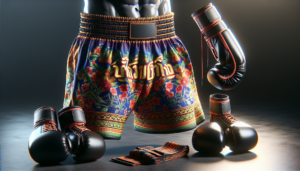Introduction to Samurai Martial Arts
Samurai, the legendary warriors of feudal Japan, were renowned for their exceptional martial arts skills and unwavering adherence to the Bushido code. Martial arts played a crucial role in the lives of Samurai, serving as both a means of combat and a way of life.
The Role of Martial Arts in Samurai Culture
For Samurai, the practice of martial arts went beyond mere physical training. It was an integral part of their culture, shaping their mindset, discipline, and code of conduct. Mastery of martial arts was not only essential for battlefield success but also for personal growth and spiritual development.
Historical Context and Evolution
The martial arts practiced by Samurai have a rich history, with roots in both Koryu (traditional) and Gendai Budo (modern) styles. Over centuries, these arts evolved and adapted to the changing needs of warfare and society. Understanding the historical context is crucial for grasping the significance and development of Samurai martial arts.
Kenjutsu: The Art of Swordsmanship
Kenjutsu, the art of swordsmanship, was the most iconic and revered of all Samurai martial arts. The sword was not merely a weapon but an extension of the Samurai’s soul.
Fundamentals of Kenjutsu
Kenjutsu techniques encompassed a wide range of skills, including stances, footwork, striking, parrying, and counter-attacking. Samurai spent countless hours honing their swordsmanship, striving for flawless technique and lightning-fast reflexes. The practice of Kenjutsu demanded unwavering focus, discipline, and mental agility.
Training and Discipline in Kenjutsu
Samurai trained rigorously in Kenjutsu, often through kata (pre-arranged forms) and sparring. The repetition of kata helped ingrain the techniques into muscle memory, enabling instinctive reactions in combat. The discipline required in Kenjutsu training extended beyond the dojo, permeating every aspect of a Samurai’s life.
Kyujutsu: Mastery of Archery
Kyujutsu, the art of archery, was another essential martial art practiced by Samurai. Proficiency in archery was crucial for both warfare and hunting.
Principles of Kyujutsu
Kyujutsu emphasized accuracy, power, and consistency in shooting. Samurai archers trained to shoot from various positions, including standing, kneeling, and on horseback. The principles of Kyujutsu extended beyond mere technical skills, encompassing breathing techniques, mental focus, and spiritual harmony.
Physical and Mental Discipline in Kyujutsu
The practice of Kyujutsu demanded a unique combination of physical and mental discipline. Samurai archers spent countless hours conditioning their bodies and minds, developing the strength, endurance, and focus necessary for consistent performance. The meditative aspect of Kyujutsu helped Samurai cultivate inner peace and clarity, even in the midst of chaos.
Jujutsu: The Art of Grappling
Jujutsu, the art of grappling, was a crucial component of Samurai martial arts. It focused on close-quarters combat, utilizing techniques for throwing, immobilizing, and submitting opponents.
Techniques and Strategies in Jujutsu
Jujutsu techniques included a wide range of joint locks, throws, chokes, and strikes. Samurai trained to use their opponent’s strength and momentum against them, employing principles of leverage and body mechanics. Adaptability and fluidity were key in Jujutsu, as Samurai had to respond effectively to various combat situations.
Historical Development of Jujutsu
While the term “Jujutsu” gained prominence during the late Edo period, the grappling techniques it encompasses have a longer history. Various schools and styles of grappling arts, such as Kogusoku, Kumiuchi, Torite, and Yawara, existed prior to the Edo period. The Takenouchi-ryu school, founded in the 1530s, is recognized as one of the earliest systematized grappling arts.
Sojutsu: Spear Techniques
Sojutsu, the art of spear fighting, was an essential skill for Samurai on the battlefield. The spear, with its reach and versatility, was a formidable weapon in the hands of a skilled practitioner.
Importance of Sojutsu in Samurai Combat
Proficiency in Sojutsu was vital for a Samurai’s combat effectiveness. The spear offered advantages in reach and versatility compared to the sword. Sojutsu techniques allowed Samurai to engage opponents at a distance, control the battlefield, and perform both thrusting and sweeping attacks.
Training Methods in Sojutsu
Samurai trained extensively in Sojutsu, mastering various techniques and stances. Training involved solo drills, paired exercises, and sparring with wooden or blunted spears. Footwork, timing, and precision were critical aspects of Sojutsu training, as Samurai sought to maximize the effectiveness of their spear techniques.
Naginatajutsu: Mastery of the Halberd
Naginatajutsu, the art of wielding the naginata (a type of halberd), was another important martial art practiced by Samurai. The naginata, with its long shaft and curved blade, was a versatile weapon suitable for both infantry and cavalry combat.
Techniques and Applications of Naginatajutsu
Naginatajutsu techniques encompassed a wide range of offensive and defensive maneuvers. Samurai trained to execute powerful slashing attacks, precise thrusts, and effective parries with the naginata. The length of the weapon allowed for maintaining distance from opponents while still delivering devastating strikes.
Strategic Importance of Naginatajutsu
Mastery of Naginatajutsu was strategically important for Samurai on the battlefield. The naginata’s reach and cutting ability made it effective against both mounted and foot soldiers. In the hands of skilled practitioners, the naginata could be used to disrupt enemy formations, create openings, and protect allied troops.
Conclusion: The Legacy of Samurai Martial Arts
The martial arts practiced by Samurai have left an indelible mark on Japanese culture and beyond. Their influence can be seen in both traditional and modern martial arts.
Influence on Modern Martial Arts
Many of the martial arts practiced by Samurai have evolved into modern Gendai Budo styles. Kendo, Iaido, Judo, and Aikido, among others, trace their roots back to the martial arts of the Samurai. These modern arts continue to embody the principles of discipline, respect, and self-improvement that were central to the Samurai way of life.
Preservation of Traditional Techniques
While the Samurai class may have faded into history, the martial arts they practiced live on through the dedication of practitioners and the preservation of Koryu styles. These traditional schools maintain the authentic techniques, philosophies, and spirit of the Samurai martial arts, ensuring that their legacy endures for generations to come.
The martial arts of the Samurai were more than just combat skills; they were a way of life, a path to physical, mental, and spiritual development. Through the practice of Kenjutsu, Kyujutsu, Jujutsu, Sojutsu, and Naginatajutsu, Samurai honed their bodies and minds, embodying the virtues of courage, loyalty, and honor. Today, the legacy of Samurai martial arts continues to inspire practitioners worldwide, offering a glimpse into the rich history and enduring spirit of these legendary warriors.

